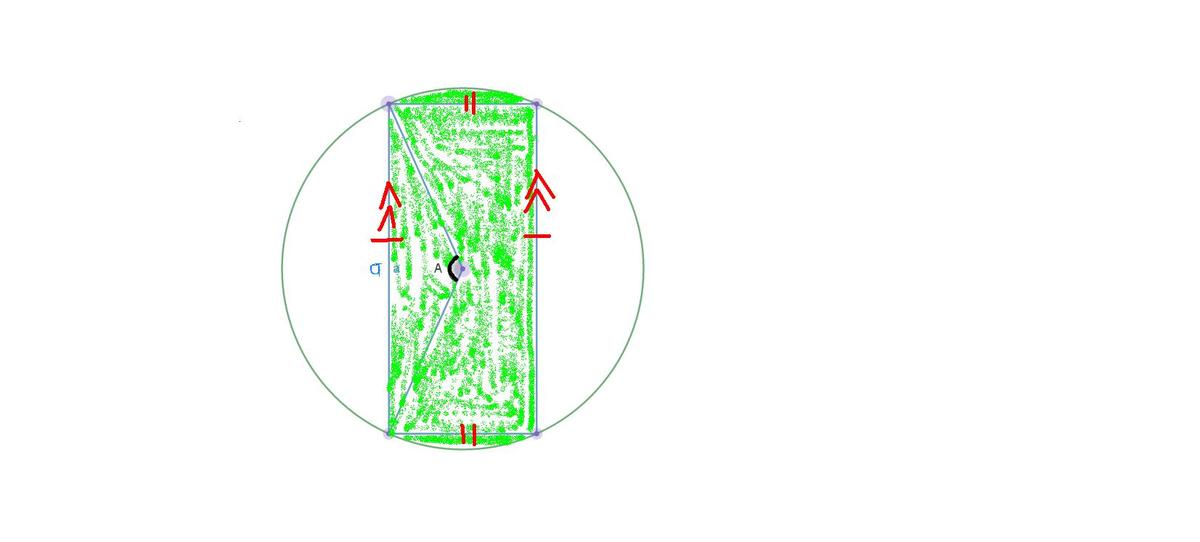
Given:
Area of the shaded region (green) =41×Area of the whole circle (Diagram not to scale)
The vertical lines(each length a) are drawn parallel and equidistant from the axis of symmetry of the figure.
The angle A is between two radii of the circle joining with the left line.
Let R = radius of the circle
21×(R)2×(A)−21×(R)2×sin(A)=21⋅43×π(R)2 [Region of one unshaded part]
(A)−sin(A)=43π
sin(A)=A−43π
a=2×sin(2A)×R
Perimeter of the unshaded region =2×(a+(R)(A))
Using (3rd order) Taylor Series approximation:
A−3!A3≈A−43π
A3≈29π
A≈2.417988 rad
Perimeter of unshaded region≈2×[(2×sin(22.417988)×R)+(2.417988)(R)]
Perimeter of unshaded region≈8.57702R
Note : The answer is inaccurate because the approximation only works well near
x=0. Nevertheless, Taylor Series is useful to approximate difficult calculations.
Easy Math Editor
This discussion board is a place to discuss our Daily Challenges and the math and science related to those challenges. Explanations are more than just a solution — they should explain the steps and thinking strategies that you used to obtain the solution. Comments should further the discussion of math and science.
When posting on Brilliant:
*italics*or_italics_**bold**or__bold__paragraph 1
paragraph 2
[example link](https://brilliant.org)> This is a quote# I indented these lines # 4 spaces, and now they show # up as a code block. print "hello world"\(...\)or\[...\]to ensure proper formatting.2 \times 32^{34}a_{i-1}\frac{2}{3}\sqrt{2}\sum_{i=1}^3\sin \theta\boxed{123}Comments
There are no comments in this discussion.